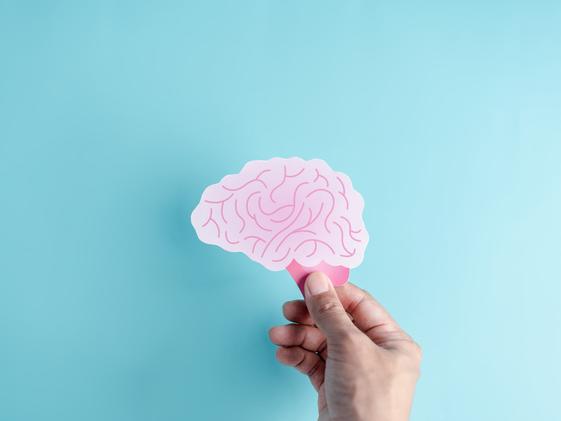
Neurodiversity-affirming education is key to supporting students into the creative industries
Autistic representation in creative art and design subjects is almost three times higher, as a proportion, than that of students with no disability, as evidenced by recent research by Jonathan Vincent and Kevin Ralston. While autism is just one form of neurodivergence, other forms are often more prevalent. So, it stands to reason that creative courses and institutions have significant numbers of neurodivergent students in their workshops, studios and lecture halls.
We urgently need more research into neurodivergence at the intersection of higher education and the creative industries, because standard systems, assumptions and processes do not take into account differences in the way neurodivergent people experience the world.
Neurodiversity literacy 101
It’s important to define some of the language of neurodiversity, as I observe a lack of fluency that holds back meaningful discussion.
I will begin by saying neurodiversity refers to the naturally occurring variation in the ways humans experience the world. Neurodivergence, however, refers to a range of ways of experiencing the world that differ from what is considered typical or standard.
I am autistic and have dyscalculia, so I am neurodivergent. I cannot be described as neurodiverse because no individual can be diverse. I’ve written about this in more detail elsewhere, with a particular focus on why getting this distinction right is an issue of social justice. For brevity, using the word neurodiverse when describing someone who is neurodivergent indicates an assumption that “diversity” means minority.
I’ll build on this further by clarifying that neuro does not mean brain but refers to the nervous system. For me, being autistic is a full-bodied experience. I think, feel, sense, perceive and interpret the world differently. To place neurodivergence in the realm of a single organ is shortsighted. This is particularly the case when it comes to teaching and learning which, in Western contexts, often champions the brain as the sole site of learning. Teaching that overlooks the embodied experience of learning will never result in truly neurodiversity-affirming practice.
Finally, I’ll further share that I define neurodiversity-affirming (neuro-affirming for short) teaching practice as one that attends to the needs and strengths of neurodiverse learners. That is, learning is accessible to all, without any one neurotype being privileged.
What does neuro-affirming teaching look and feel like?
There is a lot of good advice out there about practical adjustments that can make learning more accessible to neurodivergent learners. These tips often focus on tools, like voice-to-text software or wider considerations like sending slides and learning materials in advance. These are good tips, but I find myself advocating for more holistic considerations of neurodivergent experiences.
From my experience as a student and an educator and in my role supporting others to develop their teaching practice, there are three shifts I would love to see happen.
Moving beyond assumptions
Most neurodivergent people have faced their fair share of criticism across their lifetimes, simply by showing up as themselves. This is because certain behaviours are being interpreted through a neurotypical lens, when in fact the motivation and intent behind our actions can be quite different.
Next time you feel frustrated with a student asking lots of detailed questions, reflect on your assumptions about why they are doing so. If you assume they are challenging you, you might be overlooking the fact that the student may have experienced a lifetime of inadvertently misunderstanding things, so needs to ask lots of clarifying questions for reassurance.
When you notice a student doodling or scrolling on their phone or not looking directly at you in a one-to-one situation, it’s easy to assume they are uninterested and not paying attention. For many neurodivergent people, focus, particularly on the spoken word, is aided by undertaking another task, or focusing on something else, simultaneously. So unending scrolling may be a helpful workaround to support sustained focus and information processing.
These are just two examples of where you might misinterpret behaviour but the general principle of questioning your assumption applies in a multitude of scenarios. I recommend building reflection around your assumptions into your own practice and exploring potential alternative interpretations through a more inclusive lens.
- Autism in academic settings: unleashing unique strengths with adjustments
- Supervising neurodivergent postgraduate researchers
- How to make your university more neurodivergent friendly
Considering the bodily experience of learning
Many neurodivergent people experience differences in the way their bodies interpret sensory input. In my case, sitting under strong overhead lights for more than 15 minutes results in a burning, tingling sensation across my scalp that eventually settles into a prolonged migraine. Many of us also find the expectation of sitting on a hard chair for extended periods does not attend to the needs of our often hyper-mobile bodies.
While staff rarely have full control over the teaching environment, this can be offset by making space for movement and sensory breaks in session planning. In essence this just means building in time for breaks in any sessions that you are delivering and ensuring that students have the option to leave the room for these breaks. This will support neurodivergent learners to regulate their nervous systems and move in the ways their bodies need.
Embedding a focus on social justice, activism and advocacy
Most people who have experienced discrimination as a result of their neurotype will be all too familiar with the exhausting process of advocating for themselves. It would be wonderful to imagine this would no longer be needed as they move through their career. However, while not a monolith, inequity is deeply embedded in the creative industries – from the continued proliferation of unpaid work and the myth of exposure to the chronic undervaluing of art production and the abuse of creatives’ intellectual property rights. Poor, and at times illegal, employment practices are a hallmark of many creatives’ experiences.
Highlighting the systemic barriers neurodivergent students are likely to encounter can help them contextualise their continuing need to advocate for themselves. Understanding that the challenges they might face are symptoms of a dysfunctional system, rather than personal failings, can be transformative. When empowered and supported, neurodivergent students are well placed to advocate for social justice, question the status quo and shape equitable practice.
Centring neuro-affirming practice in careers education by moving beyond assumptions, considering the bodily experience of learning and embedding a focus on social justice in our conversations with students will support neurodivergent learners to thrive. Indeed, all minoritised groups stand to benefit from support that allows them to express their authentic selves and meet the needs of their body and mind, all while learning to advocate for themselves.
There are few spaces more inequitable than the creative industries, so it’s vital we empower neurodivergent learners to be the changemakers the creative industries so urgently need.
Hannah Breslin is an educational developer (employability) at the University of the Arts London.
If you would like advice and insight from academics and university staff delivered direct to your inbox each week, sign up for the Campus newsletter.




